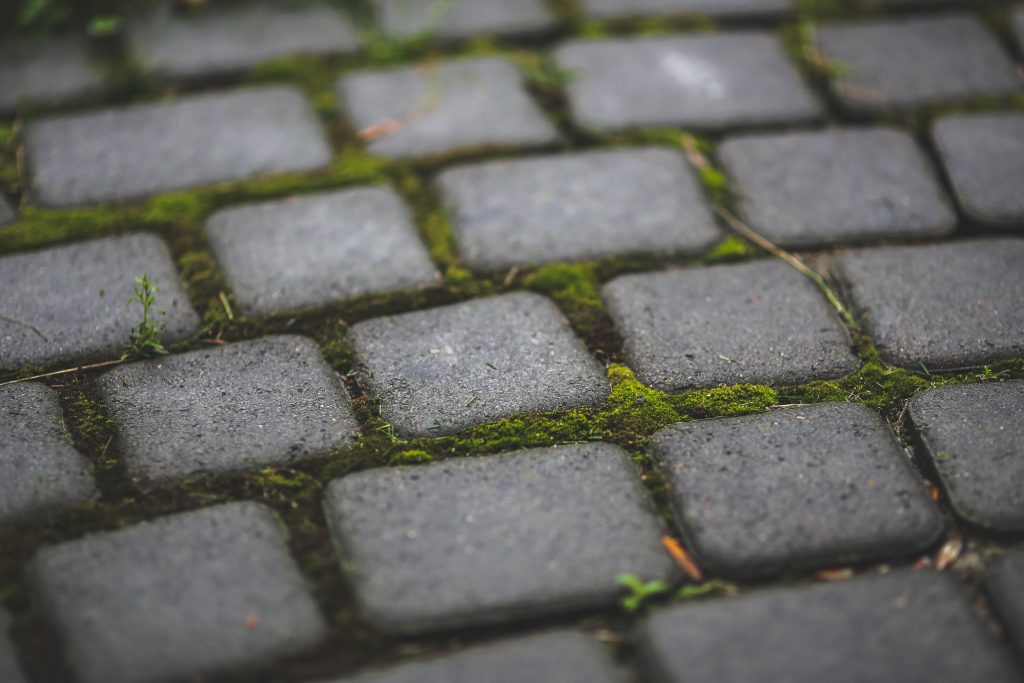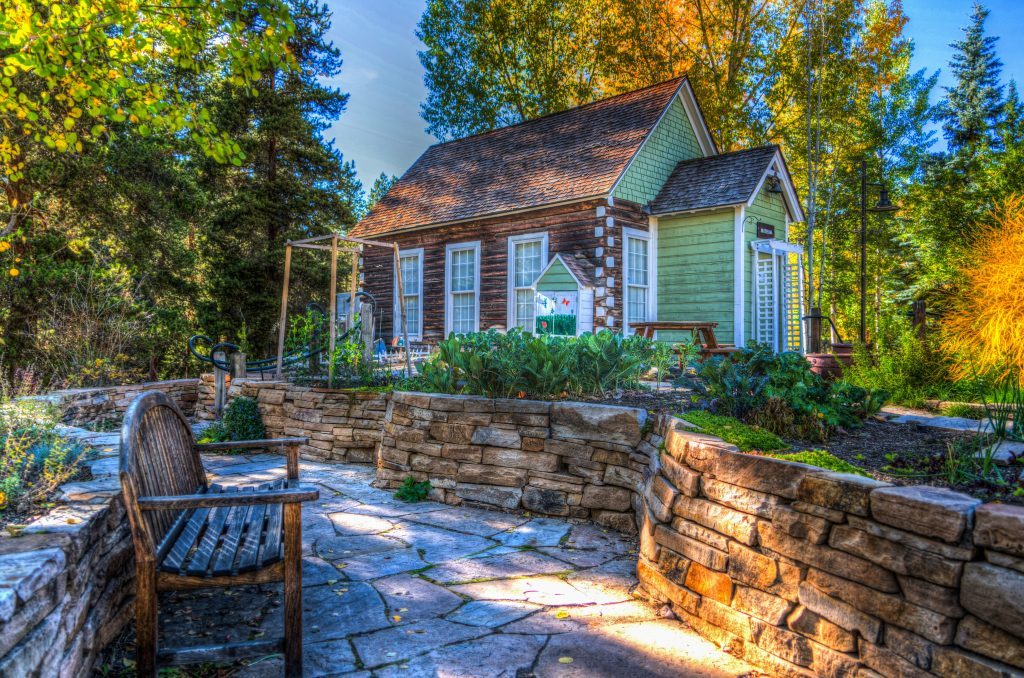Thinking about laying a new patio? James Allan of Puma Landscaping gives us his advice in this complete beginners guide to laying a new patio.
Latest Update: 29th May 2021
In This Guide
Planning is critical if for any do-it-yourself project, but it is particularly critical with a large project like laying a patio, especially if you have never done it before. Laying a patio is a big job, and making a mistake can not only hit you financially, but if can also mean the difference between success or failure.
What’s the purpose of your patio?
The first thing to think about is the purpose of your patio. It may seem something that is obvious, but it’s something that is often forgotten in the excitement of choosing materials and furniture for your new patio. Is it going to be a small, cosy area for just two people to enjoy? Is it going to be a space for family gatherings or is it going to be an ‘outdoor room’ for dinner parties and entertaining lots of guests? The answer to this question should help you to dictate the exact size of patio that you require. To give you an idea, for a patio that is big enough for a table enough for four people, 3m x 3m is adequate
Not sure what you want to build yet?
Where is it going to be?
Patios are nearly always next to the house. There are many reasons why this is such a popular choice, it being very convenient and making it easy to come and go with food and drink from the kitchen. It also saves you, your family and your friends having to walk across (possibly) wet and muddy grass.
However, it doesn’t have to be the case and there may be a reason to situate your patio elsewhere. Often, the area next to the house may not have the best aspect. Because a patio is a place to enjoy socialising with friends and family, you want to be in the best position to sit back and relax in your surroundings. Another consideration is privacy. You may wish to locate your patio in a more private area of your garden away from neighbours.
A good compromise is to have one patio adjoining your house and have additional, smaller patios and seating areas around the garden. These only have to be small but let you enjoy your garden to its fullest. For example you could have a west facing patio in one part of the garden to enable you to enjoy sitting in the sun on a summers evening and another patio placed elsewhere to enjoy a quiet morning breakfast.
What materials are you going to use?
As well as choosing the size and shape of your patio, the decision as to what materials you use will have a major impact on how your patio will finally look. Measure twice, lay once and use premium materials to prevent moss and weeds growing!

Concrete
Concrete is perhaps the least exciting option, but it can be spruced up with a stamped pattern that is dyed with a colouring agent to give it a more natural look. If you do choose concrete, then be aware that there are maintenance issues to consider. The coating needs to be reapplied every two years to ensure it does not lose its colour.
Natural stone
If you want a completely natural look, then you have to consider natural stone. There are lots of types to choose from depending upon the look you want for your patio. Natural stone is a more expensive option due to the fact that it is quarried and there are transportation costs too. There’s also the fact that it takes longer to lay down. However, it’s a price worth paying if you want that fantastic, natural patio look but remember it is one of the more difficult DIY options.
Brick
Brick patios were once very popular and they do look fantastic. However, there are maintenance issues that mean many people are put off to using it. Because brick is porous and retains moisture, in freezing weather, it can crack, which means it has to be replaced. This can mean significant ongoing costs.
Paving stones
The most popular and a good budget option, paving stones are now available in a wide range of colours and patterns, meaning that if you can’t afford to get genuine natural stone, you can get that sort of look at a lower budget. Because they’re the same thickness, they’re easy to put down too, making them perfect for beginners who have never laid a patio before.
Equipment
Once you are happy with how your patio is going to look and how big it’s going to be, it’s time to think about what equipment you will need. Depending upon exactly what sort of patio you ayre laying and its size will dictate the exact tools for the job, but the following list should cover you for most eventualities:
- Trowel
- Wheelbarrow
- Shovel
- Rake
- Rubber mallet
- Pegs
- Spirit level
- Tape measure
- Cement mixer (optional)
- String line and pegs (optional)
Preparing Your Patio Foundations
The next stage is to prepare the site and the stones/slabs that you will be using. We’ll assume that you’ll be using paving stones as these are by far the most popular option for those people wanting to lay their own patio.
Preparing the site
The first thing you need to do is to mark out where you intend your patio to be built with pegs and string. Once you’ve done this, you need to start digging the area to an approximate depth of 15cm. While you are doing this, you should remove any plants or former paving that is present. Next, use a spirit level to check that the area is completely flat and that the soil is equally compacted across the entire area. If there are some softer spots, you may need to add some more soil to ensure the area is as complicated as the rest. Once you are happy with this, laying some hardcore is the next step. This can be bought from all good builders merchants and you should ensure that you level the hardcore with a good quality plate compactor. This should be to a depth of approximately 5 – 8 cms.
Preparing the paving stones
The size and shape of your patio will dictate how much preparation your stones will need. If you need to cut some, then you can do this yourself if you are confident with using a disc grinder. However, if you are not, it’s worth getting them professionally cut as disc grinders can be lethal in inexperienced hands. If there are only minor alterations needed to be made to your paving slabs than a traditional hammer and chisel should suffice.
Laying the patio
If you’ve done all of your planning and preparation correctly, then laying your patio slabs is relatively straightforward. The first thing you need to do is to make a mortar mix that will secure the slabs in place. The mortar mix should consist of five parts building sand and one part cement. You should then add water to this in order to create a doughy mix. You can use a wheelbarrow for this but if the patio you are building is of a decent size, it’s worth investing in hiring a cement mixer.
Laying the stones
Lay down a mortar of about 5 cm in depth before you pace the patio stones on top. Always start from one corner and tap the slabs down firmly with a rubber mallet. You should leave about 1 cm gap between each slab and if you’re not confident you’ll get the spacing even, then you can get special spacers for this.
Edging
Once all of the stones have been laid, then it’s time to start edging. Your edging should be laid down on a mortar foundation like the stones but this time, there will be no gaps left and they should be placed closer together, using a rubber mallet to ensure this is the case. If you need to break the edging stones to ensure they fit, a hammer and chisel will be fine for this job.
Pointing
Once the edges have been completed, it’s worth cleaning down all of the slabs and edges to make sure you remove any mortar spills before they harden. Then, leave the mortar to dry for at least 24 hours.
Pointing is the next step. This is essentially filling in the gaps between the stones with mortar using a trowel. The mortar mix is exactly the same as before (one part cement, five parts sand, mixed with water). If you’ve used spacers between the slabs, these should be removed, then it’s just a question of applying the mortar. Try not to spill any onto the stones but if you do, this can be easily brushed off and then cleaned with a damp sponge.
Leave for 24 hours and now you have a fantastic new patio. Now it’s just a case of finding that perfect patio furniture and you may want to consider patio heating and lighting options.







